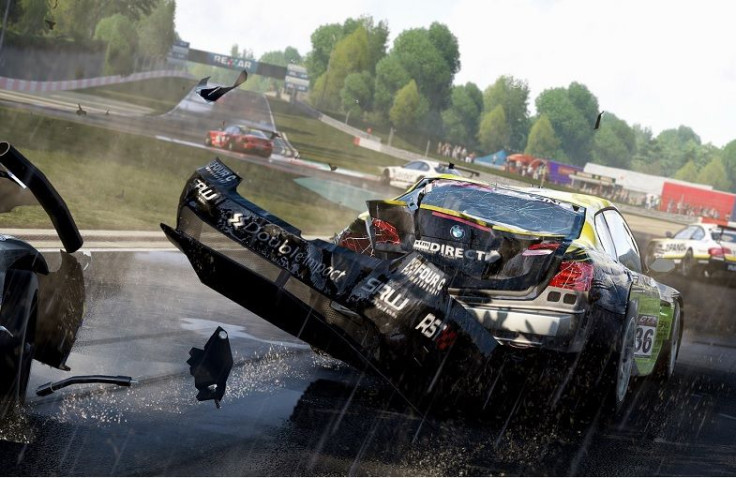For Sony PlayStation lifers, Gran Turismo has been the one and only choice for ultra-realistic racing simulation for more than 15 years. However, developer Polyphony Digital announced that its highly anticipated Gran Turismo 7 is not expected to arrive on PlayStation 4 until 2017. Now, the people of Slightly Mad Studios have just unleashed Project CARS as their answer to Gran Turismo’s stranglehold over the racing genre. We find out whether or not Project CARS has got what it takes to challenge, or even dethrone, Kazunori Yamauchi’s longstanding benchmark.
On first impression, it’s obvious that the latest-gen consoles have enabled graphics to make tremendous leaps forward. There’s plenty to admire about the game’s stunning visuals. The track truly evolves as the race goes on. Did you cut the grass or tap a wall? You'll see the marks you left on your next lap around. What's more, heavy rain during a race will pool puddles and create streams on the track surface. Vehicles not only exhibit damage at contact, but will literally fall apart as well. Panels and aero pieces will fly off and destabilize the race car if you drive too recklessly.
Incredible audio engineering also perfectly complements the visuals. Project Cars successfully emulates the tingly crackle and pop from the titanium racing exhausts. Supercharger whine and the chirp of the turbocharger blow-off valve are replicated as well.
Project Cars isn't all about its looks and aesthetics either. A next-gen physics engine runs at 600 fps and boasts an exhaustive amount of tuning features for every single car. Case in point, a player can actually set up each of the four wheels to run individual tire pressures. When a brand-new racing sim like Project Cars delivers that level of realism and attention to detail, driving enthusiasts can rest assured that their skills will be tested. Project Cars is hard. It’s really hard.
With all driving assists turned off, the racing cars are a real handful. If you’re driving at full attack mode during qualifying and decide to aggressively climb over a curb to gain tenths, the suspension rebound will be enough to generate a little lift that will send your LMP1 car spinning sideways straight into a wall. Vintage racers exhibit more body roll, which enables pros to utilize the pendulum effect to slide the car around the track. However, the same weight transfer characteristics will catch beginners sleeping. Make no mistake: Project CARS demands high levels of concentration, control, and intelligence.
On the topic of intelligence, Project CARS managed to get AI right in ways Gran Turismo never could. Instead of following a guided trajectory and parading around the lap, the extremely clever AI will take aggressive maneuvers to move into the inside and block your attempts to pass. On the other hand, the AI is also capable of creating opportunities to pass you on the inside, outside, or even deliberately cut the course to stick the move. Essentially, the AI in Project Cars has successfully simulated race craft.
As a player, your knowledge of race craft will evolve as well. Just like in Gran Turismo, the career mode in Project CARS allows a player to start from the very beginning by competing in karting championships and work their way to the big time: either Formula 1 racing or WEC endurance races in LMP1 machines. However, unlike Gran Turismo, seasoned racing gamers can also jump straight to an LMP1 career in Project CARS.
While the game is seriously fun, Project CARS actually risks taking itself perhaps too seriously. Gran Turismo has managed to keep an aging format fresh by introducing a variety of vehicles for driving experiences (track, rally, drift) as well as interesting additions including seasonal events, special challenges, and Vision GT concept cars. While Project CARS offers karts, production cars, vintage racers, touring cars, formula cars, and LMP1 prototypes, these are all disciplines that are related to grip circuit racing. Special tracks including Azure Coast and California Highway 1 deliver a more scenic alternative to the race circuits, but hardly break the single mindedness of the game as a whole.
Beyond the repetition of the race tracks, the vehicles available in Project CARS are predominantly European, which also limits the type of racing available such as Japan Super GT or Australia V8 Supercar. While the Mitsubishi EVO X proudly represents the land of the rising sun in Project CARS, import tuner enthusiasts will also be disappointed to know that icons like the R34 GT-R, FD RX-7, or Subaru STI are not in the game. In fact, obvious marques including Chevrolet, Dodge, Nissan, Toyota, Honda, Lamborghini, Ferrari, and Porsche are not represented in Project CARS at all. Meanwhile, obscure makes like Marek, Ginetta, BAC Mono, and Radical litter the list as offerings for one-make racing series or pro-am championships.
Speaking of import tuners, Project CARS does not offer any of the cosmetic personalization and modification options that are compulsory to modern racing games. Obviously, we don't expect Project CARS to offer underglow neon or chrome spinners, but the game does not offer wheel options or aero kits like Gran Turismo. Project CARS should also consider taking a page from Forza as well by allowing players to create completely customized racing livery.
Time will tell how Project CARS will evolve as we expect new DLC updates in the months to come. All in all, Project CARS is an extremely focused and meticulously authentic racing simulation game that captures the essence of achieving success in a motorsport career. However, players that are looking for a bit more variety will probably find Gran Turismo a more interesting, if not more casual, option.


















